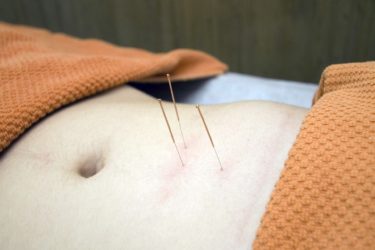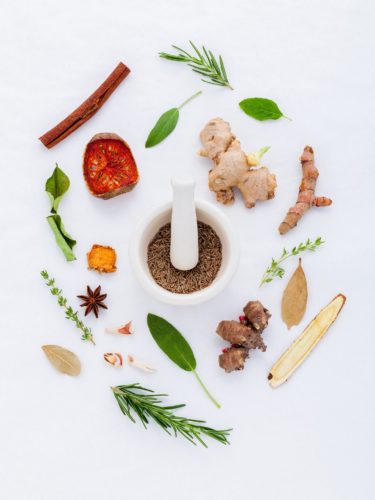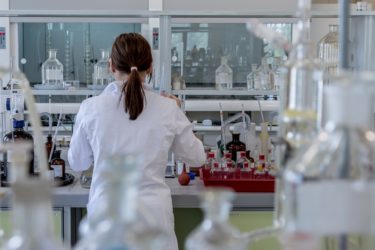My wife is a Biomedical Scientist. I try and throw that into as many conversations as I can. She’s also the one that told me about this whole scientific skepticism business. As such, when those two worlds collide she’s quick to let me know. The most recent example came from an unexpected source: as a paid up member of the Institute of Biomedical Science she gets the Biomedical Scientist magazine delivered each month, and September’s cover story set her skeptical spider senses tingling.
“You might want to have a look at this!” she said with a smile, waving it in front of my face. Her annoyance at pseudoscience invading her profession clearly outweighed by a potential opportunity to watch my blood pressure rise. She was not disappointed.
The magazine cover somewhat disturbingly goes with the title “Chinese Medicine – From the Shang dynasty to the current pandemic”, while the online version has the slightly more benign “A History of Chinese Medicine”. The article promises to look at “the medical history of one of the most ancient civilisations on earth”, an ominous nod to the appeal to ancient wisdom fallacy. It achieves its goal to a certain degree, but ultimately it comes across as an endorsement of its methods rather than an investigation of its evolution.

Before we delve in though, a quick definition: Traditional Chinese Medicine (TCM) is an umbrella term for a wide range of highly questionable treatments including acupuncture, cupping therapy, herbal remedies, and moxibustion to name but a few. The variety of treatments is a confounding factor in itself.
History lessen
Despite the billing as a chronological voyage through the story of TCM, there are some convenient omissions (more on those later). Much more importantly though, despite being spread across a full six pages it essentially fails to make any tangible attempt to answer the most important question of all: Does it actually work?
That failure might be acceptable if it was purely a history lesson, but throughout the piece there are numerous references to conditions that ‘can be treated’ by TCM, with little or no caveats, and certainly no serious investigation of whether those treatments are in any way effective.
For example, the article claims liquorice is “well known for its detoxification powers”, and also apparently “has anti-inflammatory and anti-allergy properties, helps with digestion and eases respiratory problems”. Putting aside the highly questionable concept of detoxification, it must be comforting to believe that Liqourice Allsorts is a valid health claim as well as a delicious confectionery product.
Elsewhere, turmeric is linked with stimulating blood flow, so apparently can help with cardiovascular conditions, menstrual irregularities, and even to treat pain caused by ‘blood stagnation’, which appears to be a made-up term exclusive to TCM – most charitably, it may be analogous to some real conditions such as thrombosis. In addition to that, it very much appears as if the author of the article simply copy/pasted much of this block of text from a page on the meandqi website. The turmeric claims don’t end there either. We also get congestion relief, treating bruises, aiding digestion, dissolving gallstones, decongesting the liver, and just for good measure you can use it to treat nosebleeds and heatstroke. The section ends somewhat predictably on the claims that it has ‘cancer-fighting properties’.
The perplexing final conclusion drawn by the author is that we should integrate both conventional and Chinese medicine into a “universal approach to healing and treatment”, rather than perhaps taking a more methodical approach to identify elements of TCM that may actually have some kind of beneficial clinical effect. This is especially confusing since the same paragraph compares Western vs Eastern philosophies on the body and medication “before orthodox medicine revealed the real cause of disease”, so there’s a clear admission that both were wrong.
To add insult to injury there’s a somewhat patronising implication that ‘Western’ doctors are somewhat deficient in their evaluation of their patients. Apparently TCM practitioners looks at a patient ‘holistically’, and uses the four pillars of diagnosis “looking, listening, touching and asking”… as if regular doctors don’t use all methods available to assess their patients.

Herbal diarrhoea
Of course, China isn’t the only place where we humans have taken what grows around us and attempted to make use of it for medicinal purposes. A quick literature search gives a veritable splatter of results, from South America, to India, over to Europe, and on to many more places depending on how far you want to scroll. What they essentially tell us is that all over the world, the further back you go in medical history the more guesswork there was going on. Generally speaking it didn’t go well. Even today development of medicine is based on trial and error, except that the trials are (hopefully) properly run clinical trials. That’s not to dispute the notion that something which occurs naturally can have medicinal properties, of course. For a glorious musical illustration of that, and other skeptical talking points, check out Tim Minchin’s ‘Storm’; or, if you prefer something a little less catchy, then feel free to read ‘The Aspirin Story’.
When it comes to herbal remedies, each claim should be scrutinized individually, and with great rigour. Results can vary from disappointing to promising (example: Science Based Medicine’s look at Turmeric), and if there is a tangible effect then you’re on the path to becoming a real medicine. That very point is actually made elsewhere in the article regarding artemisinin for malaria.
Omission impossible
When taking an in-depth look at TCM from past to present, it appears that the author skated past a number of noteworthy items which deserved a mention. Here’s a few of them to set things right:
- Many TCM remedies are derived from animals. This has had a devastating impact on many endangered species.
- It has been said that Mao Zedong promoted the catch-all term of Traditional Chinese Medicine in the 50s, despite the fact that he didn’t even believe it worked.
- TCM is a multi-billion dollar industry, and is heavily endorsed and protected by the Chinese Government, whose significant influence have led to it being endorsed by the World Health Organization.
- Sometimes when TCM is chosen instead of conventional treatment, it can prove fatal, such as in the tragic case of Xu Ting, the Chinese actress who died at the age of 29 after putting her faith in TCM in lieu of chemotherapy.
- There doesn’t appear to be any tangible evidence that the TCM has provided China’s population with any historical advantages in terms of health outcomes, such as life expectancy, infant mortality rates, or resilience to pandemics. There are obviously multiple variables which affect all of those outcomes, making it certainly hard to draw comparisons, which is all the more reason to apply skepticism.
Considering the author’s praise of TCM practitioners taking a ‘holistic’ approach to their diagnosis, it’s somewhat disappointing he didn’t do the same when writing the article.
SARS-hole
The one saving grace of the article is that despite the mention of the current pandemic on the magazine cover, there is no direct mention of COVID-19 in the article, and you have to, somewhat appropriately, delve down all the way down to the very bottom of the references to find a somewhat questionable article in the Journal of Traditional and Complementary Medicine. A more relevant mention could perhaps have gone to the Chinese government’s promotion of unproven coronavirus treatments.
Con-collusion

The seemingly miraculous popularity of Traditional Chinese Medicine despite its apparent lack of efficacy is somewhat mundane once you take a Scooby Doo style look behind the mask. There’s a strange fetishisation of ancient Chinese civilisation here in the West, welded together with the appeal to ancient wisdom fallacy, which can clearly have an effect on scientists writing in a scientific magazine. There’s also a worryingly long list of references in the article pointing to studies which presumably support some of the claims being made in the article, with no attempt made to evaluate how good those studies are. This is of course a common problem, exacerbated by the deluge of TCM studies that flow into the literature. Finally, and probably most importantly, TCM is worth billions of dollars, and is strongly championed by the Chinese Government. The combination of money and power generates incredible influence.
Unfortunately, they’re probably going to get away with it despite us pesky skeptics. All we can hope for is that institutions such as the IBMS take a more critical, evidence-based approach in the future, because the perceived credibility they’re giving here can be damaging.
To close out, a recommendation: If you want a more even-handed and entertaining look at Medical History, then you might want to check out the excellent Sawbones podcast.



